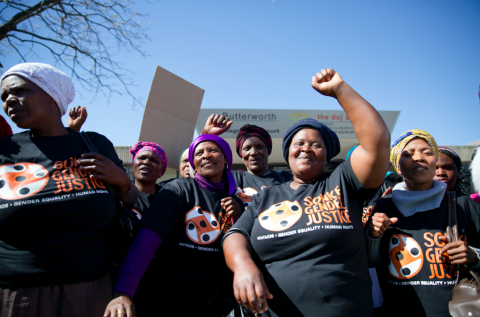CSI Sunday Times
Unpacking The Numbers
Globally, 2020 was an extraordinary year: whole sectors ground to a halt, the pandemic wreaked havoc with health services and lives; and in South Africa, levels of hunger rose to unprecedented highs. Both corporates and individuals were called upon to dig deep and help where they could. It is therefore unsurprising that corporate giving, which Trialogue estimated at R10.7-billion in 2020, dropped in 2021 – to an estimated R10.3-billion. But this doesn’t tell the whole story.
“Companies determine their CSI budgets for the following year based on their net profit after tax for the current year,” says Cathy Duff, a director at Trialogue. “This means that there is a lag; many companies’ profits were down
in 2020, which resulted in lower CSI budgets for 2021. For the first time in Trialogue’s 24 years of research in this area, just over half of companies surveyed reported reduced CSI expenditure in 2021, largely due to decreased profits.”
These overall numbers do, however, hide a lot of discrepancies, including that 36 per cent of companies increased their CSI spend in 2021. “Some companies performed extremely well in 2020 and increased their CSI spend in 2021, but not as many as in previous years,” says Duff. “Our research also showed us that in 2020, several businesses spent more than their CSI budget to support the immediate responsive reaction to the pandemic. This was then adjusted down in 2021, which also affects the figures.”
Noncash giving
More companies reported noncash giving (goods, products, services and time), but this only constituted 13 per cent of total CSI expenditure. “Increases in CSI expenditure were largely driven by noncash donations,” says Duff. “However, there is little consistency in the valuation of noncash donations. This is especially true of time, with only four respondent companies putting a value on the time their employees spent volunteering during working hours. This is a potential growth area and companies are encouraged to quantify and include this category in their CSI expenditure.”
Where the funding goes
Companies tend to support many different projects, with 60 per cent of those surveyed supporting over 10 CSI projects, and nearly a third supporting more than 50 projects each. And there were significant shifts this year in where the money went. While education still received the largest share of funding, it was down from 50 per cent in 2020 to 39 per cent in 2021. “Over 90 per cent of companies surveyed still support at least one project in the educational space, from ECD to tertiary,” says Duff. “The decrease in education spend was largely due to increases in disaster relief and food security spend. Interestingly, environmental issues are not coming through strongly in CSI expenditure: only four per cent of expenditure is directed to this cause and a quarter of corporate respondents do not consider environmental issues at all in their CSI programming.”
2022 and beyond
A reassuring 41 per cent of companies surveyed predicted an increase in CSI spending for 2022 and beyond. “Another 42 per cent felt their budget would remain the same and only 17 per cent felt their budgets would continue to decline,” says Duff. “This augurs well for 2022 and indicates we may soon see CSI expenditure climbing back to pre-COVID-19 levels, especially if more companies quantify the value of volunteering and other noncash giving.”






 Sign-up and receive the Business Media MAGS newsletter OR SA Mining newsletter straight to your inbox.
Sign-up and receive the Business Media MAGS newsletter OR SA Mining newsletter straight to your inbox.